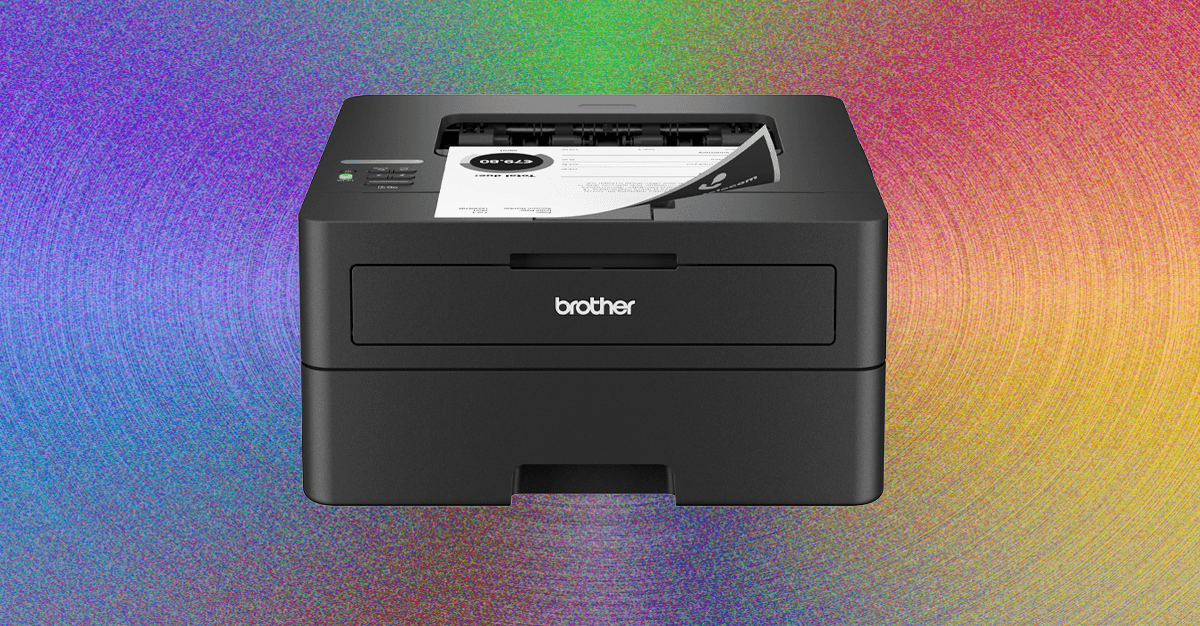Tech
What the US$55 billion Electronic Arts takeover means for video game workers and the industry

Electronic Arts (EA) is one of the world’s largest gaming companies. It has agreed to be acquired for US$55 billion in the second largest buyout in the industry’s history.
Under the terms, Saudi Arabia’s sovereign wealth fund (a state-owned investment fund), along with private equity firms Silver Lake and Affinity Partners, will pay EA shareholders US$210 per share.
EA is known for making popular gaming titles such as Madden NFL, The Sims and Mass Effect. The deal, US$20 billion of which is debt-financed, will take the company private.
The acquisition reinforces consolidation trends across the creative sector, mirroring similar deals in music, film and television. Creative and cultural industries have a “tendency for bigness,” and this is certainly a big deal.
It marks a continuation of large game companies being consumed by even larger players, such as Microsoft’s acquisition of Activision/Blizzard in 2023.
Bad news for workers
There is growing consensus that this acquisition is likely to be bad news for game workers, who have already seen tens of thousands of layoffs in recent years.
This leveraged buyout will result in restructuring at EA-owned studios. It adds massive debt that will need servicing. That will likely mean canceled titles, closed studios and lost jobs.
In their book “Private Equity at Work: When Wall Street Manages Main Street,” researchers Eileen Appelbaum and Rosemary Batt point to the “moral hazard” created when equity partners saddle portfolio companies with debt but carry little direct financial risk themselves.
The Saudi Public Investment Fund (PIF) is looking to increase its holdings in lucrative sectors of the game industry as part of its diversification strategy. However, private equity firms subscribe to a “buy to sell” model, focusing on making significant returns in the short term.
Appelbaum notes that restructuring opportunities are more limited when larger, successful companies—like EA—are acquired. In such cases, she says, “financial engineering is more common,” often resulting in “layoffs or downsizing to increase cash flow and service debt.”
Financial engineering combines techniques from applied mathematics, computer science and economic theory to create new and complex financial tools. The failed risk management of these tools has been implicated in financial scandals and market crashes.
Financialization and the fissured workplace
The financialization of the game industry is a problem. Financialization refers to a set of changes in corporate ownership and governance—including the deregulation of financial markets—that have increased the influence of financial companies and investors.
It has produced economies where a considerable share of profits comes from financial transactions rather than the production and provision of goods and services.
It creates what American management professor David Weil calls a “fissured workplace” where ownership models are multi-layered and complex.
It gives financial players an influential seat at the corporate decision-making table and directs managerial attention toward investment returns while transferring the risks of failure to the portfolio company.
As a result, game titles, jobs and studios can be easily shed when financial companies restructure to increase dividends, leaving workers with little access to these financial players as accountable employers.
Chasing incentives and cutting costs
The Saudi PIF has stated a goal of creating 1.8 million “direct and indirect jobs” to stimulate the Saudi economy. But capital is mobile, and game companies will likely follow jurisdictions that have lower wages, fewer labor protections and significant tax incentives.
Some Canadian governments are working to keep studios and creative jobs closer to home. British Columbia recently increased its interactive media tax credit to 25%.
The move was welcomed by the chief operations officer of EA Vancouver, who said “B.C.”s continued commitment to the interactive digital media sector…through enhancements to the … tax credit … reflects the province’s recognition of the industry’s value and enables companies like ours to continue contributing to B.C.”s creative and innovative economy.”
This may buffer Vancouver’s flagship EA Sports studio, but those making less lucrative games or in regions without financial subsidies will be more at risk of closure, relocation or sale. Alberta-based Bioware—developer of games including Dragon Age and Mass Effect—could be at risk.
Other ways of aggressively cutting costs might come in the form of increased AI use. EA was called out in 2023 for saying AI regulation could negatively impact its business. Yet creative stagnation and cutting corners through AI will negatively impact the number of jobs, the quality of jobs and the quality of games. That could be a larger threat to EA’s business and reinforce a negative direction for the industry.
Game players have low tolerance for quality shifts and predatory monetization strategies. Research shows that gamers see acquisitions negatively: development takes longer, innovation is curtailed and creativity is stymied.
Consolidation among industry giants may cause players to lose faith in EA’s product—and games in general, given the many other entertainment options that are available.
Creative control and worker power at risk
Some have raised concerns that the acquisition could affect EA’s creative direction and editorial decisions, potentially leading to increased content restrictions.
While it’s still unclear how the deal will influence EA’s output, experiences in other industries might be a sign of things to come. For instance, comedians reportedly censored themselves to perform in Saudi Arabia.
The acquisition may also have a chilling effect on the workers’ unionization movement. Currently, no EA studios in Canada are unionized. Outsourced quality assurance workers at the EA-owned BioWare Studio in Edmonton successfully certified a union in 2022, but were subsequently laid off. Fears of outsourcing, layoffs and restructuring could discourage future organizing efforts.
On the other hand, the knowledge that large financial players are making massive profits could galvanize workers, especially considering that before the buyout, EA CEO Andrew Wilson was paid about 264 times the salary of the median EA employee.
The deal certainly does nothing to bring stability to an already volatile industry. Regardless of any cash injection, EA remains very exposed.
This article is republished from The Conversation under a Creative Commons license. Read the original article.![]()
Citation:
What the US$55 billion Electronic Arts takeover means for video game workers and the industry (2025, October 21)
retrieved 21 October 2025
from https://techxplore.com/news/2025-10-us55-billion-electronic-arts-takeover.html
This document is subject to copyright. Apart from any fair dealing for the purpose of private study or research, no
part may be reproduced without the written permission. The content is provided for information purposes only.
Tech
Faithful Companions: The Best Printers We’ve Tried

Before anything else, you’ll have to decide between ink and laser. I’ll get into the details when it comes to each model, but the most important consideration is paper type, because it’s a limitation rather than a benefit. Laser printers use heat in the bonding process, which means if you regularly print on windowed envelopes or photo paper, you’ll need to either use an ink printer or change to a thermally safe alternative, which can be cost prohibitive if you print a lot.
Inkjets are the most common flavor of home printer, and they work like you might expect, by boiling ink until it splatters through a series of tiny holes. You didn’t expect that? Me neither! Pretty exciting stuff.
Inkjet printers come in two flavors, with either prefilled cartridges or built-in tanks. The latter is quickly becoming more popular thanks to better pricing, more convenience, and a massive reduction in wasted plastic. If you’re buying a new printer in 2025 you should opt for an ink tank, if not a laser printer. They’re a little more work to setup and maintain, since you have to keep the tanks topped off, and they should remain in one place on a flat surface to avoid leaks. I can’t imagine many situations where a printer would be constantly moving and tilting, but it’s a consideration.
You thought InkJets were cool? Laser printers work by blasting a tube full of dried plastic particles, then fusing them to the paper with heat. They tend to cost more upfront, but the cost per page is overall much lower. Where a $20 ink cartridge might print 200 pages, a $60 toner cartridge could print 2000. They tend to be a lot faster than inkjet printers, and you don’t have to worry about them drying out. Plus, the pages come out of the printer nice and warm, and you can’t really put a price on that.
There are also thermal printers, which are commonly used for receipts or shipping labels. Instead of filling the printer with ink and depositing it onto a surface, they apply heat in precise patterns to special paper, allowing you to print text and images in low resolution, and typically in one color. If you print shipping labels or simple stickers at home, these can save you a lot of time and ink cost, but they have more limitations.
Laser printers are my preferred type, as long as your paper type and budget can support them, but most home users will be happy with an ink tank printer.
Tech
Gravel Running Shoes Are the Best Suitcase Shoe

“In general, we are noticing many of these shoes have more of a road running influence than they do trail,” says Bodin. “So, there will be a mix of foams, midsole geometries, less attention to fit, and a more subtle outsole pattern compared to trail shoes.”
What Are the Benefits of Gravel Shoes?
In a word: versatility. You can lace up a gravel shoe at home with confidence that they’ll handle whatever lies ahead, provided you’re not hitting a really technical trail or ankle-deep mud.
“Many of the shoes in this category can run well on roads, gravel paths, and light trails,” says Bodin. “That’s not something that very many strictly road shoes or dedicated trail shoes can do.”
The more rockered midsoles aim to smooth your heel-to-toe transitions, cutting the calf muscle fatigue over uneven ground and on longer runs. They’re also often lighter than technical trail shoes, thanks to the smaller lugs, less pronounced rock plates, and lower levels of upper reinforcement. That serves up more agility than heftier trail shoes, so you can move faster and lighter over runnable ground.
Do Gravel Shoes Feel Different From “Regular” Trail Shoes?
“Yes and no,” says Bodin. A lot depends on the brand. Some companies, like Craft, have many gravel-specific options. Others, like Salomon and Hoka, use their redesigned road running shoes for their gravel category.
Gravel shoes also have limits, warns Bodin. “In my experience, most gravel shoes will be limited when they reach a moderately technical trail-running scenario. Again, because the bulk of the gravel shoe experience is focused on the overall ride on smoother terrain, performance declines when there are more turns or more challenging terrain with rocks and roots.”
Do You Really Need a Gravel Shoe?
Like everything in running shoe world, that depends. There are trail shoes out there with the chops to conquer everything from technical to more runnable terrain, like the Hoka Speedgoat 6 ($125). Some of the pricier trail shoes like the North Face Vectiv Pro 3 ($250) pair modified versions of their springy road-shoe foams with carbon plates to deliver bouncier rides that don’t feel out of place on the road. I’ve tested loads of these shoes, and some top-tier trail shoes run better on the road than cheaper road shoes.
However, if you regularly tackle firmer, less technical mixed terrain on your runs, generally in drier conditions—and rarely venture onto more technical trails—there’s a good case for investing in a gravel shoe. It’ll carry you happily from road to trail and back again, and even cover your road runs on the way to the trail.
Likewise, if you’re a newcomer to trail running, a gravel shoe could be a good halfway house as you transition from the asphalt to the single track, thanks to a ride which retains some road-shoe familiarity. They’re also an excellent suitcase shoe—if you’re traveling and you can only fit one shoe in your luggage, the versatility of a gravel shoe makes it a great choice.
Tech
This AI Model Can Intuit How the Physical World Works

The original version of this story appeared in Quanta Magazine.
Here’s a test for infants: Show them a glass of water on a desk. Hide it behind a wooden board. Now move the board toward the glass. If the board keeps going past the glass, as if it weren’t there, are they surprised? Many 6-month-olds are, and by a year, almost all children have an intuitive notion of an object’s permanence, learned through observation. Now some artificial intelligence models do too.
Researchers have developed an AI system that learns about the world via videos and demonstrates a notion of “surprise” when presented with information that goes against the knowledge it has gleaned.
The model, created by Meta and called Video Joint Embedding Predictive Architecture (V-JEPA), does not make any assumptions about the physics of the world contained in the videos. Nonetheless, it can begin to make sense of how the world works.
“Their claims are, a priori, very plausible, and the results are super interesting,” says Micha Heilbron, a cognitive scientist at the University of Amsterdam who studies how brains and artificial systems make sense of the world.
Higher Abstractions
As the engineers who build self-driving cars know, it can be hard to get an AI system to reliably make sense of what it sees. Most systems designed to “understand” videos in order to either classify their content (“a person playing tennis,” for example) or identify the contours of an object—say, a car up ahead—work in what’s called “pixel space.” The model essentially treats every pixel in a video as equal in importance.
But these pixel-space models come with limitations. Imagine trying to make sense of a suburban street. If the scene has cars, traffic lights and trees, the model might focus too much on irrelevant details such as the motion of the leaves. It might miss the color of the traffic light, or the positions of nearby cars. “When you go to images or video, you don’t want to work in [pixel] space because there are too many details you don’t want to model,” said Randall Balestriero, a computer scientist at Brown University.
-

 Tech1 week ago
Tech1 week agoGet Your Steps In From Your Home Office With This Walking Pad—On Sale This Week
-

 Sports7 days ago
Sports7 days agoIndia Triumphs Over South Africa in First ODI Thanks to Kohli’s Heroics – SUCH TV
-

 Entertainment7 days ago
Entertainment7 days agoSadie Sink talks about the future of Max in ‘Stranger Things’
-

 Fashion7 days ago
Fashion7 days agoResults are in: US Black Friday store visits down, e-visits up, apparel shines
-

 Politics7 days ago
Politics7 days agoElon Musk reveals partner’s half-Indian roots, son’s middle name ‘Sekhar’
-

 Tech7 days ago
Tech7 days agoPrague’s City Center Sparkles, Buzzes, and Burns at the Signal Festival
-

 Sports7 days ago
Sports7 days agoBroncos secure thrilling OT victory over Commanders behind clutch performances
-

 Sports7 days ago
Sports7 days agoF1 set for final-race showdown as Verstappen exploits McLaren blunder | The Express Tribune

















